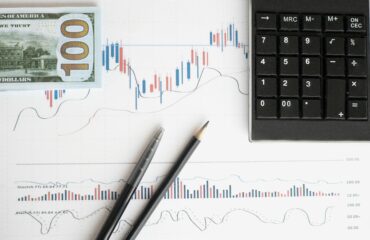By Zaiim Premji and Lucas Rimmer
Introduction
The private equity industry’s net asset value (NAV) has grown 600% since 2002 – twice as fast as global public equities (McKinsey Global private markets review 2019) – and it is therefore important to understand how it behaves in abnormal economic conditions, such as recessions. In the 2007-2009 financial crisis, the S&P 500 saw a drastic 55% drop in returns compared to a relatively smaller decline of 28% for the U.S. Buyout sector. This also occurred in 2000, where the S&P 500 decreased 47% as opposed to 27% for the U.S. Buyout sector. The graph below shows that the US Buyout industry also recovered more quickly than the S&P 500 and represents a smaller ‘peak to trough’ decline for the private equity industry than public markets.
A look into the private markets

Value of US buyouts compared to the S&P 500 from Q3 2007
COVID-19 has not disrupted the industry as much as the previous recessions did, with a 4% decrease in fundraising during H1 2020. In fact, 46% of general partners (GPs) in Europe believe that in the next 6-12 months investing opportunities will be stronger than in 2019 primarily due to corporate spin-offs. Whilst COVID-19 has limited returns for private equity firms, the impact has not been as significant as the recessions in 2000 and in 2007-2009. During H1 2020, private equity backed deals have dominated M&A, capturing the largest proportion of M&A activity in 13 years.
The outperformance of private equity during downturns is due to the fact they have other opportunities that are not available in public markets. Private markets are protected from the public and they can change and create value during these downturns, hence increasing returns. Moreover, recessions are considered to present new opportunities for various business sectors and private equity firms can capitalise on this by using their vast sums of dry powder and investing for long term goals without being hindered by the effects of recessions on market sentiment in public markets. Private equity’s illiquid structure can also provide benefits during downturns as it prevents investors from panic selling, stopping them from liquidating their holdings below market value. This strengthens the hypothesis that PE-backed firms can act as stabilisers during recessions.
Since the previous recession, the PE industry has expanded greatly with assets under management (AUM) expected to hit $5tn by 2023 (Preqin). But these changes are not only significant to what is currently happening in the industry, but also to how the industry will react to the next economic downturn. The first major difference is the abundance of capital which has accumulated as private equity has become more attractive; this attractiveness can be partially attributed to the rise in shadow capital. Lending to PE backed companies was generally underwritten by banks but today there is an increasing amount of debt being provided directly by private credit, in a process called “disintermediating the banking market”. The build-up in dry powder allows for capital to be invested far quicker and to a wider range of necessities. Moreover, there has been a shift in sector participation with PE firms turning to resilient, non-cyclical industries. These more resilient sectors include technology, which has seen $181bn invested into it by PE since the start of 2018 – more than double the ‘vulnerable’ sectors of retail and energy combined. Companies have also learned from previous downturns of the necessity for working capital and, therefore, are improving flexibility into their funding and working capital metrics (EY).
The Increasing Resilience of the PE Industry:
The PE industry is much more resilient now than it was going into the Global Financial Crisis. There are four main positive differences to note:
- Stronger liquidity and deal activity: Fundraising and execution levels are far greater than they were a decade ago, illustrating that the PE industry environment is active and healthy. The top players in the industry have raised funds at consistent 1–2-year intervals since the financial crisis and the top five firms raised $100bn in 2017 and 2018 (BCG). Mega funds have contributed the most to this increase in fundraising activity, accounting for 40% of the total value in 2018 (BCG). Dry powder levels have risen simultaneously, reaching $1tn in 2018 (Preqin). The private equity industry is about selecting the right companies, and productive selection of companies is growing – from 2013-2018, investment deployment rose at an average compound annual rate of 10% (BCG). The increase in investment deployment and fundraising displays risks related to rising valuations and debt leverage levels. However, they are expected in a finance climate characterised by high fundraising and low interest rates.
- Portfolio components are more recession-proof: Before the Global Financial Crisis, private equity performance was cyclical. Between 2005 and 2007, cyclical industries represented 25% of buyout deals in the top 10 PE firms. Nowadays, PE firms are much less exposed to cyclical swings as they have invested a greater share of their funds into technology related sectors – which are less sensitive to economic swings – almost halving their percentage of investments in cyclical industries. When reshuffling their portfolios, PE firms did not have cyclicality as their reasoning for doing so, however their efforts to take advantage of growing sectors and limit volatility reflects that they have tried to assess potential downturn impacts in their return expectations.

Percentage of PE buyout deals in different sectors
- A systematic approach to value creation: In the past decade, PE firms have emphasised operational performance of their portfolio companies. Currently, around 70-80% of value creation comes from EBITDA growth – far higher than multiples and financial engineering, which account for only 10-15%. The top PE firms are hiring operating partners and external advisors to reinforce their operating management expertise. In addition, many firms are adopting plans which involve work-streams designed to make the portfolio company more downturn resilient. A collective effort from the major PE players has strengthened the industry’s ability to withstand economic downturns.
- Investment format diversification: PE firms are using new investment formats that take advantage of non-equity instruments and reduce the risk of needing to hold “fire sales”. Long-hold funds have risen to prominence recently, which give the chance to hold onto profitable companies for longer. This allows for a more flexible and resilient fund structure for cyclical movements in the markets. PE funds have also diversified into more multi-asset strategies. Diversification has long been touted to make portfolios more stable and resistant through decreasing volatility, but in PE there is added benefit whereby it helps firms to achieve substantial operational synergies.
How can the PE industry continue to find upside in downturns?
Ironically, PE firms should look to go on the offensive during economic downturns by advancing market positions, positioning themselves with new investments, and implementing operational model improvements:
- Be a shark: During a slowdown, variance among companies is important. During large, volatile economic swings, all entities within the market are affected in the same way regardless of their activity and health. However, during slowdowns, performance is split between “active and healthy firms” versus “weaker firms”. Weaker companies must give more time towards shoring up their balance sheet and changing their business model, while stronger companies can strengthen their positions and growth possibilities. We see this commonly in M&A, where strong companies in slowdowns and downturns can make strategic acquisitions at a discount, boosting long term prospects.
- Pursue new investment opportunities: Public to private deals have been growing in popularity in recent years. With the increased liquidity in PE along with current economic policies of low interest rates, PE firms can take advantage of this growing trend and buy out underperforming corporations at a discount, especially during slowdowns. Additionally, economic slowdowns can also manufacture opportunities for PE firms to direct distressed and turnaround assets into new deal flows by exploiting lower multiples and untapped value creation.
- Make use of ESG: With the current awareness surrounding sustainable investing, the quicker firms can implement ESG, advance diversity and inclusion, and incorporate digitalisation, the better. It is important for firms to continue to develop these initiatives even during downturns as this will help to future-proof their portfolio companies along with their value and performance. Nowadays, ESG metrics are essential when calculating capital allocation. Furthermore, it has been found that valuation multiples and profit margins were higher, while risk was lower for companies heavily incorporating ESG into their practices. Good company values and a wider awareness will allow the PE industry to attract top talent and create a sustainable foundation for growth.
- Continue to increase resilience: Increased resilience has been one of the defining factors in the private equity industry’s ability to deal with economic downturns. Although it may be tedious, taking a zero-based approach and finding better operational solutions (e.g., more robust cash management solutions) can give cost savings of up to 10-15%.
Conclusion
The private equity industry continues to outperform the market and thrives during downturns for multiple reasons that include its increased resilience, generally illiquid structure, and vast amounts of dry powder. With the quickly changing investment climate, the industry cannot afford to sit on its laurels and stay stagnant. PE firms have much stronger fundamentals than before, and this will allow them to take advantage of a period with low interest rates. By capitalising on bold plays and doubling down on operational improvements, the PE industry can make itself more recession proof and future ready.
Authors: Zaiim Premji, Lucas Rimmer
Editor: Tiago Guardão
References
https://www.leadersleague.com/en/news/four-reasons-why-private-equity-is-better-prepared-for-a-downturn-than-a-decade-ago
https://www.nb.com/en/global/insights/the-historical-impact-of-economic-downturns-on-private-equity
https://assets.ey.com/content/dam/ey-sites/ey-com/en_gl/topics/private-equity/private-equity-pdfs/ey-why-private-equity-can-endure-the-next-economic-downturn.pdf?download
https://www.bcg.com/publications/2019/private-equity-capture-upside-downturn
https://www.icapitalnetwork.com/insights/blog/how-private-equity-performs-in-a-downturn/
https://www.bcg.com/it-it/publications/2017/total-societal-impact-new-lens-strategy
https://assets.ey.com/content/dam/ey-sites/ey-com/en_gl/topics/private-equity/private-equity-pdfs/ey-why-private-equity-can-endure-the-next-economic-downturn.pdf?download
https://www.pehub.com/h1-2020-pe-backed-buyouts-dominate-ma-activity/
https://www.mckinsey.com/~/media/mckinsey/industries/private%20equity%20and%20principal%20investors/our%20insights/private%20markets%20come%20of%20age/private-markets-come-of-age-mckinsey-global-private-markets-review-2019-vf.ashx



Comments are closed.